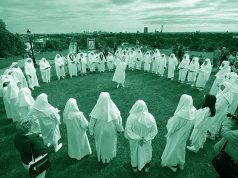“It was neither that this man sinned, nor his parents; but it was in order that the works of God might be displayed in him.” John 9:3
Displayed – Who is blind in this story? It isn’t the man at the side of the road? It is the disciples of Jesus. The disciples saw only the pitiful condition of the man born blind. They did not see what Jesus saw. God put this blind man in their pathway in order that blind man might minister to them. The disciples asked about the cause of his blindness. They wanted to blame someone. But Jesus saw the purpose. The purpose of this blind man was to give those who had eyes the ability to see.
The Greek word here is phaneroo., it means, “to make apparent, visible, or known.” It is the perfect word for the blindness of the disciples. They had sight but they could not see. Jesus revealed to them a truth much deeper than the issue of blame. He led them to open their eyes to the opportunity of God.
A servant leader must have eyes that “see” the opportunities to reveal God’s glory. Many times those opportunities present themselves in unexpected ways. A blind man does not appear to be a likely candidate to demonstrate sight. But God is not limited by human conditions. We are blind only if we do not see who He is.
We have two choices here. We can see what the disciples saw. Problems, impossibilities, blame, despair, and sin. Or we can see what Jesus saw. God at work!
Having eyes that receive images makes no difference at all unless we know what we are seeing. The servant leader is constantly looking for an opportunity from God. A problem is a potential victory. The impossible is divinely routine. Despair is the doorway to hope. Sin is the schoolteacher of forgiveness. Blame is the backhand of purpose. “It all depends on how you look at it.”
What do you see?







